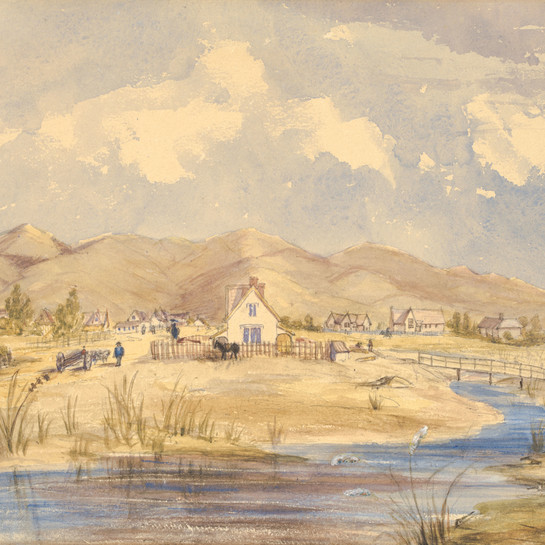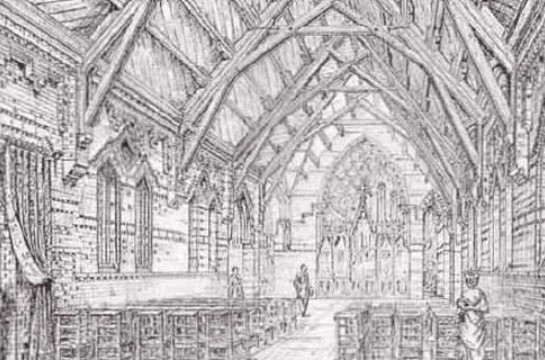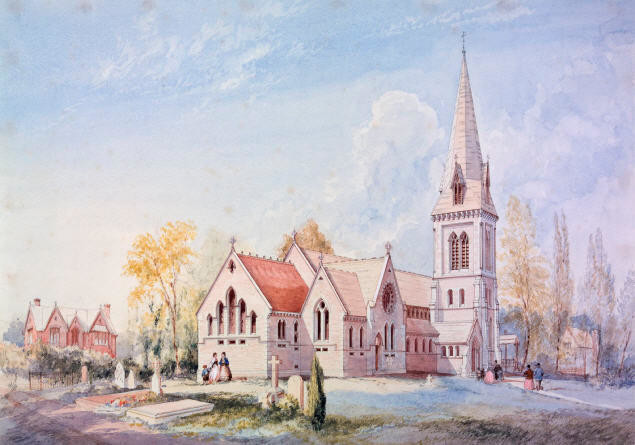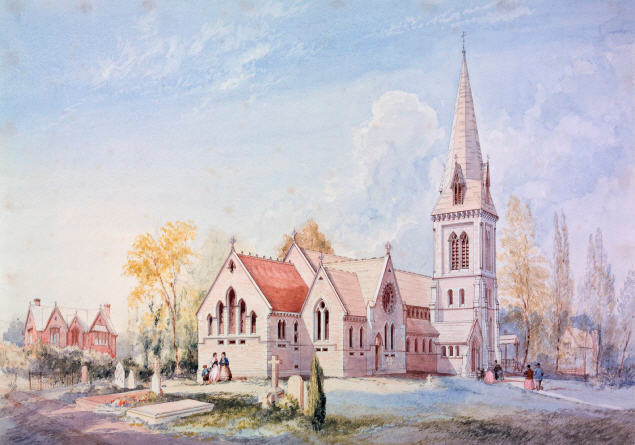Benjamin Woolfield Mountfort
Aotearoa New Zealand / British, b.1825, d.1898
Holy Trinity Church, Avonside
- 1873
- Watercolour
- The Church of the Most Holy Trinity, Anglican Parish of Avonside
- 400 x 563mm
- L88/134
- View on google maps
Tags: Christianity, churches (buildings), crosses (visual works), graves, people (agents), religious buildings, tombstones (sepulchral monuments), towers (building divisions)
Sadly demolished due to damage sustained by the 2011 Christchurch earthquakes, Holy Trinity Church was one of architect Benjamin Mountfort’s most accomplished designs. To complement the church, Mountfort also designed all the interior fittings and furniture. Completed more than twenty years after he arrived in the colony, the Holy Trinity Church was the first church Mountfort was able to design using stone. Mountfort trained in England under the notable Gothic Revival architect Richard Carpenter, and his Revival style suited the Canterbury Association’s ambition to transplant English culture in the colony. Some of his buildings in Ōtautahi / Christchurch were demolished over the years, and the earthquakes of 2011 also took their toll, but Canterbury Museum, the Canterbury Provincial Council Buildings and Trinity Congregational Church survived – with the last two currently undergoing major restoration and strengthening projects.
(Pickaxes and shovels, 17 February – 5 August 2018)
Exhibition History
This was one of the first churches where the architect Benjamin Mountfort was able to design not only the building itself, but also its furnishings. The project also offered Mountfort the rare opportunity to complete a church in stone, even though he had worked in Canterbury as an architect for more than twenty years.
Mountfort’s work was very precise, paying great attention to accuracy and detail. Most of his work was in watercolour and his subjects were architectural.
Mountfort was born in Wolverhampton, England. He grew up in Birmingham and in 1844 was articled to Richard Cromwell Carpenter (1812-1855), a leading Gothic Revival architect. Arriving in Lyttelton in 1850, Mountfort went on to design some of the most significant buildings in Christchurch, including the Canterbury Museum (1870). He was also an accomplished watercolourist and was a foundation member of the Canterbury Society of Arts in 1880.



